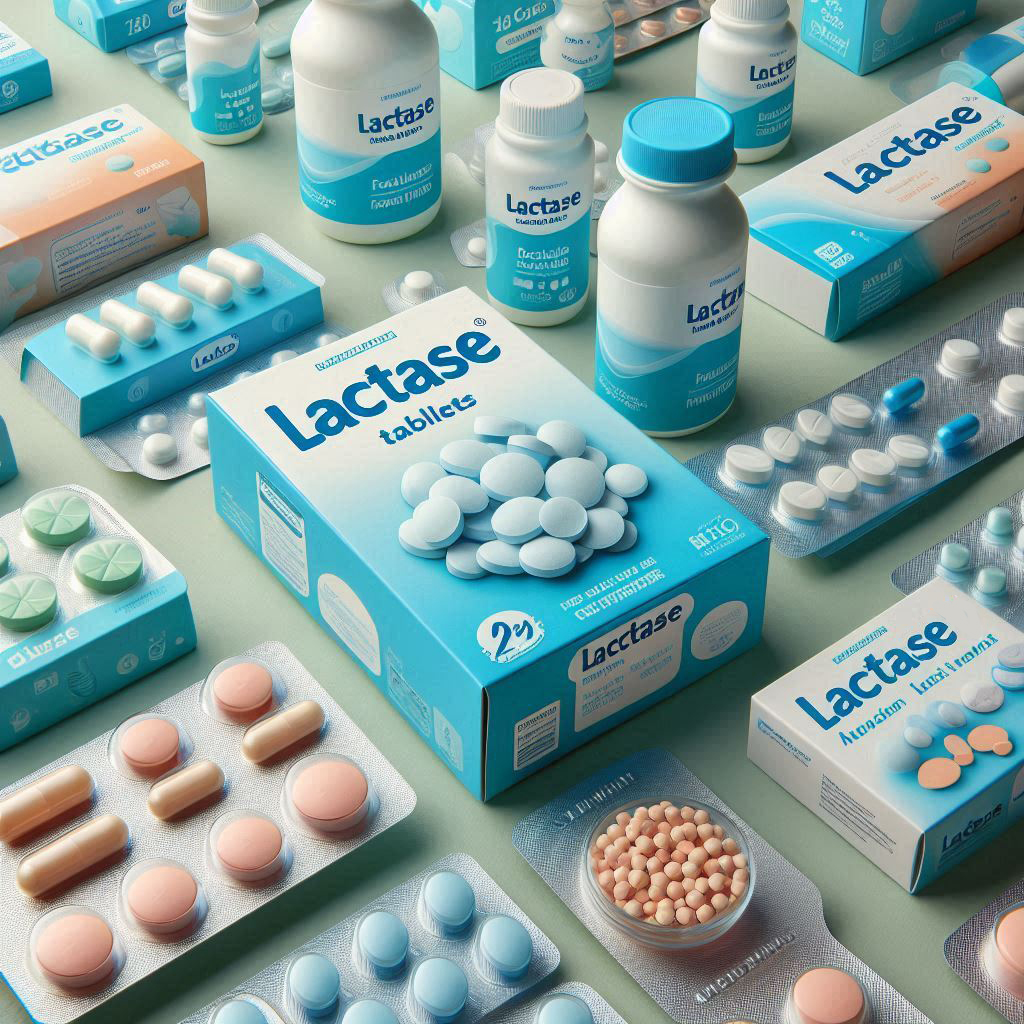Therapy for lactose intolerance

Letzte Aktualisierung am 3. October 2024 von Dr. Michael Zechmann-Khreis
After diagnosis, two points are important for the treatment of lactose intolerance: support from a certified nutritionist and keeping a food and symptom diary. As the cause of the lactose intolerance also has an influence on the therapy, it is essential to seek the help of a nutritionist. This is usually paid for by the health insurance companies or can be arranged as part of a company health promotion program. In any case, talk to your employer to see if there are any options.
Avoiding lactose, but not always
It used to be said that lactose should be strictly avoided. Today, these things are viewed somewhat differently in the treatment of lactose intolerance, as it has been understood that lactose intolerant people still produce lactase, but less. This means that if I drink a little milk on an empty stomach, I get symptoms. If I consume the same amount of milk for lunch in the form of a greasy pasta bake, I can tolerate it without any problems. This is because the lactose, which is broken down in the small intestine, stays there longer and the lactase has more time to break it down.
The aim of nutritional therapy for lactose intolerance is to find out which food composition best utilizes the residual activity of my lactase. This is where the“Ask Ingrid” app comes in handy, as you can check how much lactose is present in which food.
elimination diet
In the first 2-3 weeks after diagnosis, lactose (milk sugar, not milk protein!) should be avoided as much as possible in order to give the intestine a regeneration phase. This period is called elimination phase elimination diet. Dietary habits should also be reviewed with the aim of improving them. In particular, the fiber content and macronutrient content should be reviewed and adjusted. The amount of fruit and vegetables should be optimized and, above all, one should try to improve or stabilize the microbiome somewhat through the targeted consumption of probiotic foods. In Germany, we drink a lot of UHT milk, so it would make sense to switch to lactose-free whole milk and to consume natural yoghurt, including plant-based yoghurt. As this is quite complex, support from a nutritionist would be very important here.
Test phase
During the 6-10 week test phase, you try to increase your lactose intake. In other words, you test which lactose-containing products you can tolerate and in what quantities and food compositions. The aim is to be able to tolerate different amounts of lactose in the future. You can expand your choice of foods and dare to try something new. It is important to always allow a little time for each test. So don’t test in the morning and in the evening, but try something new every 2-3 days. Especially in this phase, a food and symptom diary is very important and can provide many insights.
You can then slowly start taking small amounts. During this time, you should generally eat gently, i.e. do not fry food, but steam it. Easily digestible food is preferable to food that is difficult to digest. In principle, a kind of light diet similar to that after a stomach flu. After this time, you can start eating a “normal” – but lactose-free – diet again. Some sufferers tolerate small amounts (approx. 1g) of lactose well, while others tolerate almost no lactose. Everyone has to test this for themselves, although it must be said that most people can tolerate larger amounts of lactose if they stick to their diet.
permanent diet
As part of the treatment of lactose intolerance, a needs-based diet should be followed, i.e. all important nutrients, vitamins and co should be supplied through food. You should be able to tolerate individual amounts of lactose and intuitively know which products you can and cannot tolerate and when. Basically, we now know that people with lactose intolerance can tolerate 10 grams of lactose per day. That is about 200 ml of milk (spread over the day and as an ingredient in prepared dishes).
Nutrition with lactose intolerance

A normal diet contains about 30g of lactose per day. As described above, a low-lactose diet consists of approx. 10g and a lactose-free diet of less than 0.1g of lactose per day. Many patients are afraid that they will only be able to eat completely lactose-free. But this is wrong. In most cases, a low-lactose diet is sufficient to treat lactose intolerance. In this context, it is important to mention that a diet failure, a “slip”, does not represent a health risk. So it doesn’t hurt to keep challenging yourself and your gut and to test a little more lactose in a self-test. Strict abstinence, i.e. meticulous adherence to a strictly lactose-free diet, can worsen the situation, especially because it negatively influences the intestinal bacteria. For people with lactose intolerance,regular lactose intake canpromote the adaptation of the colon microbiome by supporting the growth of lactose-digesting bacteria, potentially reducing intolerance symptoms1.
Lactase tablets: Taking the missing enzyme for treatment
The lactose-splitting enzyme lactase can be purchased in tablet, solution or powder form and taken with food. The preparations make it possible to enjoy a carefree visit to a restaurant or accept an invitation to dinner. These tablets should not be seen as a treatment for lactose intolerance, but as an aid in everyday life. There is no consensus among experts as to whether or not these tablets minimize the production of the body’s own lactase. Research results indicate that the production of the enzyme lactase in humans is not influenced by the intake of lactose with food or by lactase supplements. Intestinal lactase expression appears to be constitutive and does not increase with lactose consumption and does not decrease with lactose withdrawal1. This contradicts the previous assumption. Further research is needed to answer this question.
How to take lactase products
The strength of these preparations is given in FCC. This abbreviation stands for “Food Chemical Codex“. This is a measure of the purity of food chemical substances. The FCC was developed in the USA at the end of the 1950s and first published in 1966. There are now many high-dose products (over 9,000 FCC). However, as you cannot take too much, there is no risk of overdosing. These products are usually taken directly with a meal.

1g of lactose is broken down under laboratory conditions by approx. 200 FCC of lactase, which is less than 20mg of enzyme. However, our body is not a laboratory, so this calculation is not correct for the daily use of the preparations. There are various reasons for this. On the one hand, the acidic environment in the stomach slowly but surely deactivates the lactase, on the other hand, the enzyme activity also depends on storage (time, temperature …). And the effectiveness of the preparation depends on the composition of the diet, the time of intake, etc. It is not possible to specify exactly how much FCC is required.
It is assumed that you should consume around five to seven times the amount of lactase compared to the laboratory, i.e. around 1,000-1,500 FCC for 1g of lactose. An average meal therefore contains around 6,000 – 14,000 FCC. However, it does not make sense to calculate FCC units exactly. After a while you will be able to estimate how much FCC you need for certain meals.
In a survey on the nmi portal in September 2014, most of the over 500 respondents stated that they dosed with 5,000-15,000 FCC per meal2. Lactase is usually ingested with the first few bites. If you have forgotten to take lactase, you can still take the preparation a few minutes after eating. Chewable tablets or powder are suitable here.
Which lactase preparations work?
It should be noted here that all lactase preparations work well. The only differences are in the form of administration, dosage, price and additives. Cheaper preparations often have a poorer lactase quality, which means they have to be dosed higher and therefore lose their price advantage. Lactase preparations last for approx. 2 years, i.e. old packs should be disposed of as the enzyme activity is no longer present. If the preparation has been heated above 60°C, the enzyme activity is also no longer present and the preparation is no longer effective. This is particularly important if you leave the lactase in the car and the sun heats up the interior.
Caution: Iron supplements should be taken at least three hours after lactase. No other interactions are known to date.
Lactose-free dairy products
Nowadays you can find lactose-free dairy products in almost all supermarkets. This is of course a blessing for those affected, but should also be viewed with caution. After all, completely avoiding lactose is not sensible. You should therefore use these products with a little common sense and still use lactose-containing dairy products in your permanent diet. Yoghurt is particularly suitable here.
Vegan dairy products
The range of plant-based milk substitutes is now almost greater than the range of lactose-free dairy products. All these products are lactose-free because they are vegan. They are excellent substitutes, but you need to test a little when cooking and using them to see which product works with what. For example, plant-based cream can only be whipped with a fat content of 31% or more.
Consequential diseases
Lactose intolerance itself does not pose a direct risk to health. If it is recognized and you eat accordingly, there is usually no consequential damage. Long-term consequences are only to be expected if lactose is consciously avoided over a long period of time. This is because you then tolerate less and the microbiome deteriorates.
Lactose intolerance is not a disease!
Even a violation of the diet is not harmful (only unpleasant). However, as dairy products are an important source of calcium in our part of the world, you should ask your doctor or dietician about alternative sources of calcium (broccoli, mineral water, etc.). Thanks to the wide range of lactose-free dairy products available, this is no longer a major problem.
Scientific review of this article: Dr. Michael Zechmann-Khreis
Sources and others
- R. A. Forsgård, “Lactose digestion in humans: intestinal lactase appears to be constitu tive whereas the colonic microbiome is adaptable”, Am. J. Clin. Nutr. , vol. 110, no. 2, pp. 273-279, Aug. 2019, doi: 10.1093/ajcn/nqz104.
- Survey nmi portal, average intake of FCC per meal, n=500, 2014
